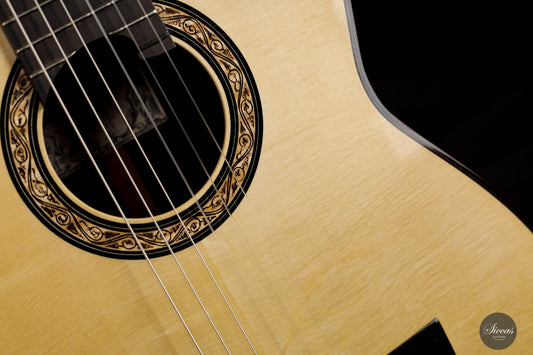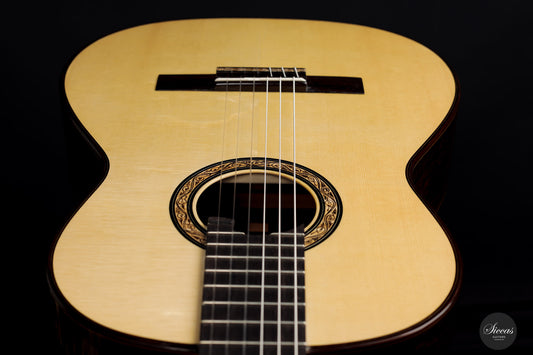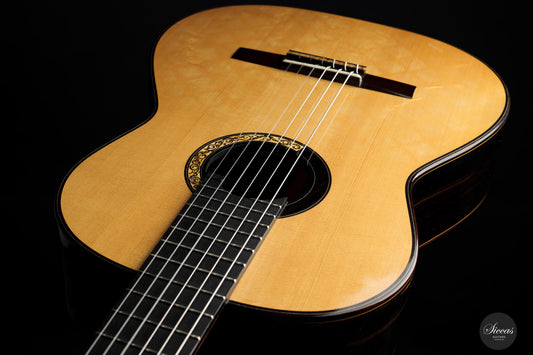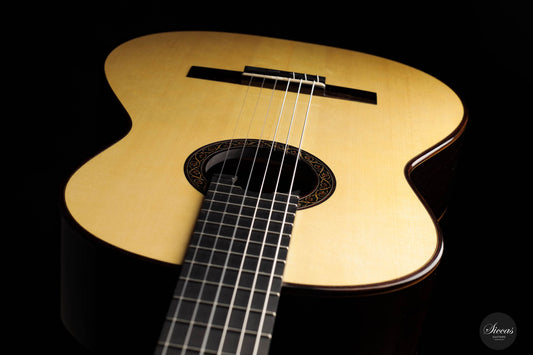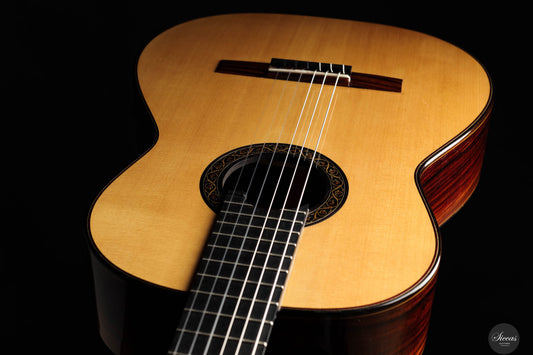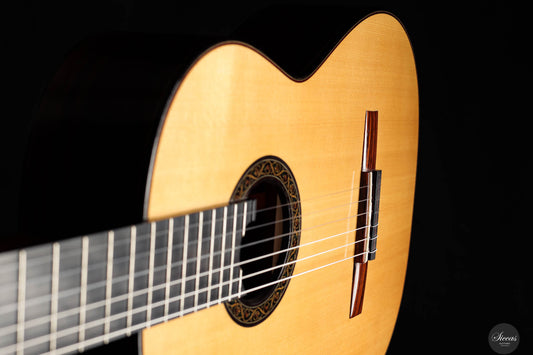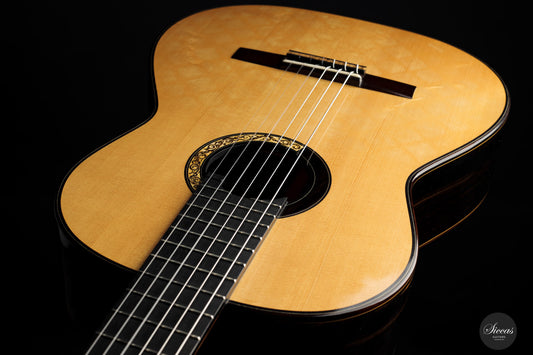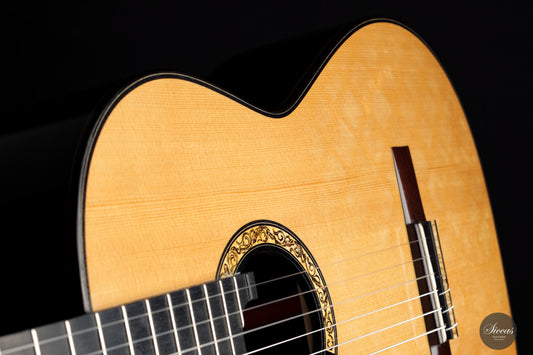Philip Woodfield
-
Luthier: Philip Woodfield
-
Luthier: Philip Woodfield
-
Luthier: Philip Woodfield
-
Luthier: Philip Woodfield
-
Luthier: Philip Woodfield
-
Luthier: Philip Woodfield
-
Luthier: Philip Woodfield
-
Philip Woodfield - 2019 No. 416 "Edo"
Price: 6.990 €Sale price 6.990 € Price:Unit price per Tax free (0% BM)0 €Save: -6.990 €Luthier: Philip WoodfieldConstruction Type: Lattice
You May Also be Interested to Learn More About Our Museum
Philip Woodfield – Guitar Maker
Philosophy and Working Approach
I deeply enjoy the process of fine woodworking, and it has been a part of my life since childhood. My approach to guitar making is hands-on and organic. I limit the use of machines because I prefer working with hand tools, and I believe this makes the instruments more personal. I use traditional glue for many critical joints, and the guitars are finished exclusively with natural shellac.
Sound Quality and Playability
It has always been my goal to build guitars that offer clarity, sustain, and good tonal separation. What I love most are guitars that sing.
My guitars have a pure and sweet tone, and they also offer volume. As a guitarist, I know how important it is for the instrument to be expressive and allow exploration of a wide tonal palette. It must feel right—featuring a neck shape and tuning machines that are not restrictive and are comfortable. It has to feel satisfying to play.
Longevity and Instrument Development
I believe that a guitar should sound good and vibrant right from the start, offering a glimpse of its potential. During the break-in period, the guitar can continue to improve and will do so for years to come with proper care.
Wood Selection and Processing
In my more than 30 years as a guitar maker (over 350 guitars), I’ve gained extensive experience in selecting wood. Most of it is rejected in favor of the few pieces that truly inspire me to create the fine instruments I aim for. All my woods are properly aged, and I work in a humidity-controlled environment of 40 to 45%, which is essential for an instrument’s longevity.
Finish and Playing Comfort
I greatly enjoy the process of French polishing. In my opinion, it is visually unmatched with its deep sheen. From a technical standpoint, I consider it the best finish, as it is thin and relatively soft and does not affect the tone. Additionally, the wood feels warmer compared to lacquered guitars, and in the neck area, the thumb glides effortlessly over the smooth surface. Although it is easier to damage than lacquer, repairs are much simpler.
Client Communication and Custom Work
When working on commissioned instruments, I enjoy sending progress photos and offering regular consultations to involve the customer as much as possible in the exciting process of building a personalized guitar.






